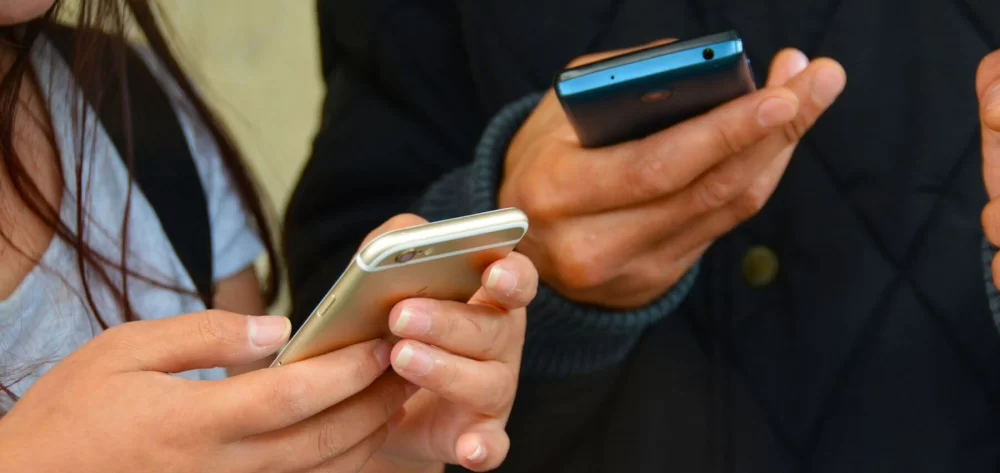Do I need additional storage space? What really matters with built-in cameras? What difference does high refresh make? The search for the perfect – while still affordable – smartphone generates numerous questions. This article from moneyland.ch arms you with the most important information needed to choose the right phone.
What will you do with the phone?
The number one question to ask yourself before buying a smartphone is: What exactly will I use the device for? The answer to that question determines which phone is ideal for you. For example, if you hardly ever use your phone to take pictures, then there is no need to pay more for a better built-in camera. If you play a lot of demanding games, you will want to look at phones with processors that are capable of powering the games you enjoy.
Flagship or budget model?
The smartphone market can be divided into three general price brackets. The price of a phone at the time it is launched determines which category it falls into:
- Flagship (from around 800 francs on up)
- Mid-range (between around 300 and 800 francs)
- Budget (less than 300 francs)
The flagship devices from the big manufacturers generally incorporate the latest technology, and their price tags reflect this. If you want something more affordable, looking at mid-range or budget models is recommended. Flagship devices from one or two years ago can also be more affordable – particularly in the case of second-hand devices – but their processors, cameras, and other components are no longer on the cutting edge. You can find more tips for saving money when buying phones in this moneyland.ch guide.
The more heavily you use your phone, the more sense it makes to invest in a flagship model. Games and other apps which demand high processing power will typically run most reliably on high-end devices. The best camera systems are also normally only available with the most expensive smartphones.
Thanks to the new technology and long-term support which come with flagship devices, you can safely assume that you will not need to upgrade your phone again for a long time. Cheaper devices, on the other hand, may be limited in their ability to run new apps after several years – either because their hardware does not support future developments, or because the operating system cannot be updated.
If, on the other hand, you are in the habit of regularly changing your phone, you will save all the more money by steering clear of high-end models.
iPhone or Android
Whether an iPhone or Android-powered phone would work best for you depends strongly on your personal preferences. The main difference is that Apple’s iPhone use the iOS operating system instead of Android. The advantage of iOS is that it was developed specifically for iPhones, and integrates seamlessly with Apple’s product ecosystem. Sharing data between iPhones and other Apple devices is normally very simple.
The advantage of Android is that both the system and the way your phone works can more easily be adapted to suit your specific needs. The user interface and apps may vary somewhat between phone brands. But in most cases, these differences are not significant enough to play a key role in choosing a phone.
The rule of thumb is: If you are happy with the operating system which you already use, there is little need to move to a different system. Even if you like the design or features offered by the alternative system, having to get used to a whole new interface can be tiresome. You may also discover once you have bought your new phone that you miss some aspects of the system which you were accustomed to using.
Photos
Many smartphones, and particularly flagship models from the big brands, have very good cameras. Google’s cheaper Pixel phone models are known for offering exceptional cameras in the mid-price segment. But which phone would work better for you in practice, and whether or not a more affordable model could work for you, depends mostly on your personal preferences.
If the camera is an important feature for you, get online and compare photos and videos taken as part of tests by independent reviewers. You can find many of these on tech websites and on YouTube.
For many consumers, the ability to take good photographs in poor light is a deciding factor. This makes sense because you will not likely carry studio lighting around with you everywhere you go. For this reason, you should place a strong focus on tests which compare photos taken at night or after dusk.
Both smartphone and camera manufacturers like to advertise the number of megapixels in their cameras. But this figure says little about the actual quality of images. It only tells you which resolution images have. A phone camera resolution of 10 megapixels is generally sufficient for good, printable photos. But even bad cameras may support much larger resolutions. For this reason, camera resolution is not the most important criteria for choosing a camera.
Videos
For filming too, there are numerous capable smartphone cameras on the market. If you plan on using your phone to film video, you should compare sample footage for each of the phones you are considering. Make sure to watch videos from independent tests and not those provided by the manufacturers. Here too, comparing image quality for low-light conditions makes a lot of sense.
One technical factor which you should account for is the frames per second rate (FPS) – the number of individual image frames which the camera is capable of capturing in one second of video. For simple videos, a rate of 30 frames per second is sufficient. If, on the other hand, you want to film in slow motion (for sports photography, for example), then higher FPS rates are beneficial. Many smartphones also have special video loop modes with extremely high frame rates.
In contrast to photos, resolution is important when it comes to video. As with photos, resolution does not determine the actual image quality. But when you play video with a low resolution on a high-resolution screen, the image may appear soft or even pixelated. If you want to watch your videos on a 4K television set, for example, then using a phone capable of filming 4K video makes sense. On the other hand, if you will only watch videos on your phone, then a resolution of 1080 pixels is normally enough, even if your phone has a 4K-resolution screen.
A disadvantage of filming in high resolution is that it creates large video files which take up large amounts of space. But you are free to film at lower resolutions if file size becomes a concern.
Display types
Smartphone screens normally use either the older LCD or the newer AMOLED technology. AMOLED provides better image contrast compared to LCD and also displays colors more accurately. Additionally, AMOLED normally consumes less power.
The disadvantage of AMOLED displays is that they can be dimmer than LCD screens. It is also theoretically possible for static images to become embedded in AMOLED screens. However, how often that actually happens in practice is unclear.
AMOLED displays are normally found on devices in the mid to high price ranges. LCDs are most common on budget phones. If you are not sure which screen type you prefer, drop into a phone dealer and compare display models.
Screen resolution
Many smartphone manufacturers advertise high-resolution displays in their marketing. Whether or not screen resolution makes a difference, and how big a difference it makes, depends on the size of the device and the distance at which you look at your phone. For a phone with a 6-inch screen viewed at a distance of 25 centimeters, a full HD display (1080 pixels) is sufficient. The closer to your eyes you hold your phone, the bigger a difference resolution makes. If you typically hold your phone less than 20 centimeters from your eyes, you will likely notice a difference between a 4K screen and a 1080-pixel screen.
If you plan to use your phone for virtual reality applications, getting the highest possible resolution is recommended. The reason for this is that when you use virtual reality, your phone’s screen is both near your eyes and each eye sees just a portion of the total pixels.
The disadvantage of high-resolution displays is that they are more expensive and consume more power. Not getting a higher resolution than you actually need is advantageous for both your wallet and your battery life.
Screen refresh rate
Typically, phone screens have a refresh rate of 60 hertz. That means the image on the display changes 60 times per second. There are also screens with much higher refresh rates. These high refresh displays make certain applications – games in particular – feel more fluid.
If you think you could benefit from a high refresh rate, take time to try out a high refresh phone in a store before buying one. The high refresh rate is a luxury feature which can drive up the price tag and drive down the battery life.
Foldable screens
Alongside conventional smartphones, there are now also a number of foldable smartphones on the market. Currently, the available models are very expensive – normally as expensive as the flagship models from their corresponding brands. But the components like the processor and camera are typically lower-grade than those of flagship phones. So you are paying a premium just for the foldable screen.
You should only opt for a foldable display if you are sure that you have a real use for it. The advantage of these devices is that they may have much larger screens, or they may be more compact than standard phones when folded.
Processor
The processor – or more specifically, the system on chip (SoC) – used in the phone has a big influence on the price of the device. The SoC determines your phone’s computing power and graphics capabilities. Currently, the most powerful processors for phones include Apple’s A16 (iPhones) and Qualcomm’s Snapdragon 8 (Android devices).
For most users, a high-end SoC provides more power than necessary. If you do not do any processor- or graphics-intensive tasks (games or video editing, for example), a mid-range SoC should serve you just fine. However, you should note that a very weak processor may not be able to run newer games, for example. You can compare different processors on websites like Notebookcheck.com.
Memory
For average users, 4 gigabytes of RAM is normally sufficient. Many phones have much more memory, but that will only benefit you if you use demanding apps (certain games, for example) or if you use many different apps simultaneously.
Your phone’s operating system also uses up memory. Apple’s iOS requires around 1 gigabyte of memory, while Android needs around 2 gigabytes. So the iPhone requires less memory just to run, which is beneficial when memory runs short.
Battery
A phone battery’s strength is measured in milliamp hours (mAH). The higher the value, the better. However, the battery life depends largely on how much power your specific device uses. So just because a device has a high mAH rating does not mean that the battery will last longer before needing to be recharged.
Normally, manufacturer websites provide information about how long devices run on a full charge. But these estimates are often very optimistic, because many people use their phones much more intensively. So going to test websites to find out how long phone batteries last in real-world situations makes sense.
Regardless of the size of your battery or the energy-efficiency of your phone, the actual battery life is obviously dependent on how you use your phone. Writing emails requires much less energy than gaming, for example. So you can generally know whether or not your battery will last longer or shorter based on your habits.
If you frequently need to charge your phone quickly – when leaving home in a hurry, for example – getting a phone with fast charging is advantageous. This technology lets you fully charge your phone in as little as one hour. In order to use fast charging, both your phone and charger must support it.
Storage
Many smartphones are available in a number of versions with different amounts of storage space. Models with more memory are often significantly more expensive. So it is important to consider how much storage you really need.
Part of your phone’s storage space is already used up by the operating system. The amount which is used up varies between devices. The operating system usually occupies several gigabytes. Apps also play a role. Games, in particular, can easily use up several gigabytes of storage. If you want to download videos or podcasts, you will need to have enough storage space.
Capturing a lot of video or huge numbers of photos with your phone’s camera can quickly fill up your storage space. Because different phone models compress videos and photos in different ways, there is no unified standard for how much space media files require. Depending on the device and setting, you can store around 200 photos or two minutes of 4K video per gigabyte. Reducing the image quality also lowers the amount of space required.
Memory cards
Of course, you can reduce the memory required by transferring large files like videos to a hard drive or to the cloud. Some Android phones have a microSD slot. You can insert an SD card into this slot to extend your phone’s storage space.
Make sure that the phone you are considering supports the storage sizes of cards you want to use. Some older (and cheaper) card readers do not work with large-capacity SD cards. The manufacturer’s website provides information about whether or not a phone has a card slot and which storage cards are supported. In some cases, the term microSDHC is used to describe SD cards with up to 32 gigabytes of storage capacity, while the term microSDXC is used to describe cards with up to 2 terabytes of storage.
iPhones do not have SD card slots, so you do not have the option of extending their memory with SD cards.
Dual SIM
If you want to use more than one phone number on the same phone (one Swiss and one foreign SIM, for example), then getting a dual SIM phone can make sense. Phones like this let you insert two SIM cards which can both be used to connect to mobile service providers without having to physically exchange SIM cards.
If you already have SIM cards which you want to use, make sure that the card’s size format matches that of the SIM slot. If not, you may have to order a new SIM card from your service provider. This also applies to phones with just one SIM card slot.
Some dual SIM phones do not let you use a second SIM and an SD card at the same time. If you want to use both a second SIM and a memory card, make sure to check with the dealer or manufacturer whether or not that is even possible.
5G
Many current smartphones support 5G. Telecom companies claim that this technology lets you connect to the Internet at speeds of about 2 Gbps. Even faster speeds should be possible in the future. Short response times for Internet access is another advantage of 5G.
Whether or not you can use 5G depends on your mobile plan and on network coverage. If your mobile plan does not include 5G, then you will not be able to use it even if your phone supports 5G. If you have a 5G plan and phone, but your mobile network does not have 5G antennas in your area, then you will still only be able to connect at the available speeds. You can find an overview of network coverage on your mobile service provider’s website. You can use the filters in the “network technology” field of the moneyland.ch mobile plan comparison to find mobile plans which include 5G.
Some smartphones are available in both 5G and 4G versions. If you do not need 5G, you can generally save money by getting the 4G version.
Brands
Brands should not be the biggest consideration when buying a phone. Nearly all major phone makers offer models in all price ranges, and each has its own strengths and weaknesses. If you want to use iOS, you are limited to using iPhones from Apple.
If you are not exactly sure which phone you want, brands can be a useful guide in pointing you in the right direction. You can find a broad overview of phone brands and what they are known for in this guide.
More on this topic:
How to get a phone (almost) for free
Which phone brand is right for me?





